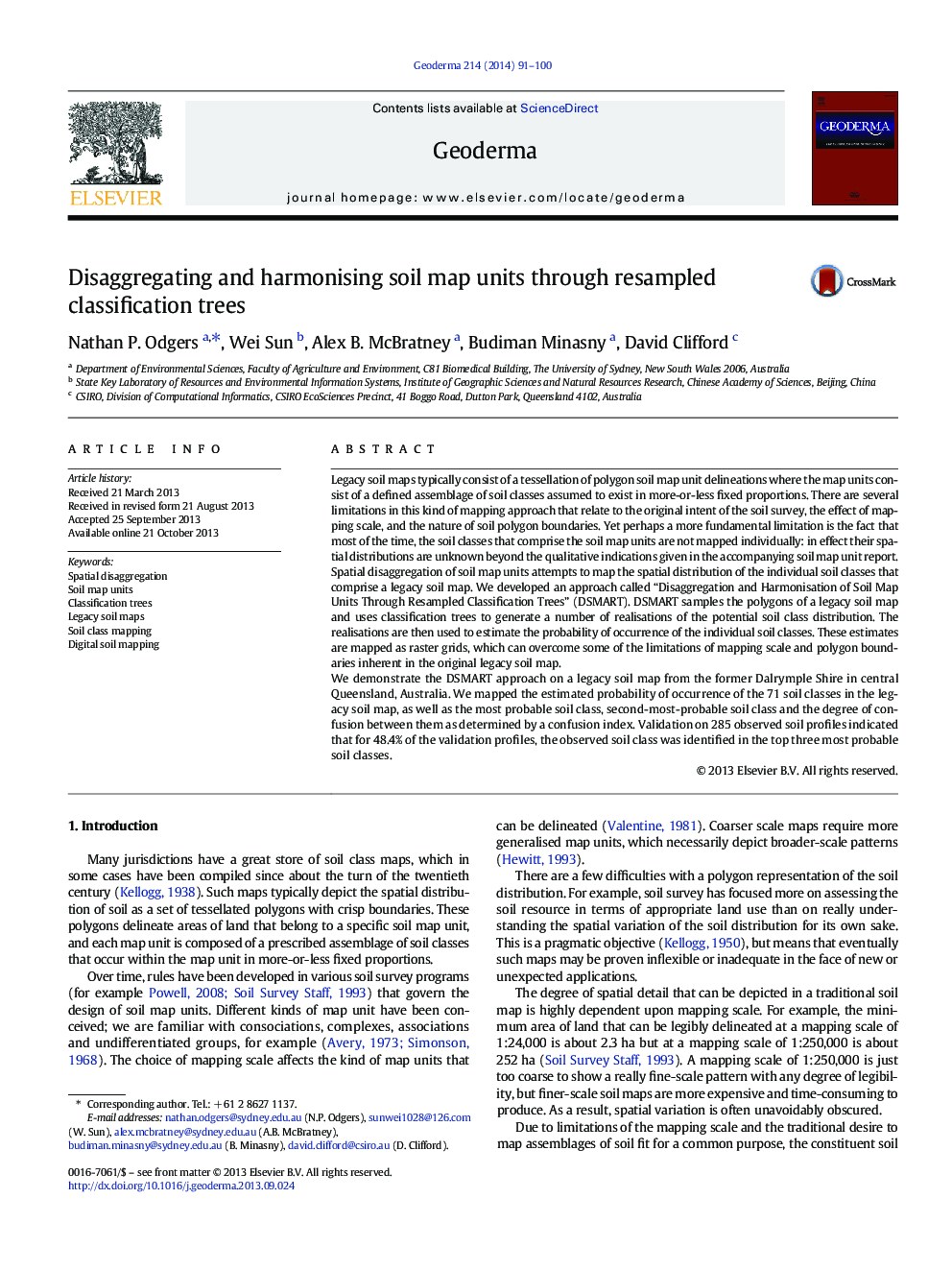| کد مقاله | کد نشریه | سال انتشار | مقاله انگلیسی | نسخه تمام متن |
|---|---|---|---|---|
| 6409058 | 1629478 | 2014 | 10 صفحه PDF | دانلود رایگان |
- We developed DSMART, an algorithm for disaggregating legacy soil map units.
- We used DSMART to map estimates of probability of occurrence of soil classes.
- The most probable and second-most-probable soil classes were derived and mapped.
- DSMART can disaggregate all soil classes in a legacy soil map simultaneously.
Legacy soil maps typically consist of a tessellation of polygon soil map unit delineations where the map units consist of a defined assemblage of soil classes assumed to exist in more-or-less fixed proportions. There are several limitations in this kind of mapping approach that relate to the original intent of the soil survey, the effect of mapping scale, and the nature of soil polygon boundaries. Yet perhaps a more fundamental limitation is the fact that most of the time, the soil classes that comprise the soil map units are not mapped individually: in effect their spatial distributions are unknown beyond the qualitative indications given in the accompanying soil map unit report.Spatial disaggregation of soil map units attempts to map the spatial distribution of the individual soil classes that comprise a legacy soil map. We developed an approach called “Disaggregation and Harmonisation of Soil Map Units Through Resampled Classification Trees” (DSMART). DSMART samples the polygons of a legacy soil map and uses classification trees to generate a number of realisations of the potential soil class distribution. The realisations are then used to estimate the probability of occurrence of the individual soil classes. These estimates are mapped as raster grids, which can overcome some of the limitations of mapping scale and polygon boundaries inherent in the original legacy soil map.We demonstrate the DSMART approach on a legacy soil map from the former Dalrymple Shire in central Queensland, Australia. We mapped the estimated probability of occurrence of the 71 soil classes in the legacy soil map, as well as the most probable soil class, second-most-probable soil class and the degree of confusion between them as determined by a confusion index. Validation on 285 observed soil profiles indicated that for 48.4% of the validation profiles, the observed soil class was identified in the top three most probable soil classes.
Journal: Geoderma - Volumes 214â215, February 2014, Pages 91-100
